7 jaw-dropping images of storms in outer space
Who knew violent atmospheric disturbances could look so good?
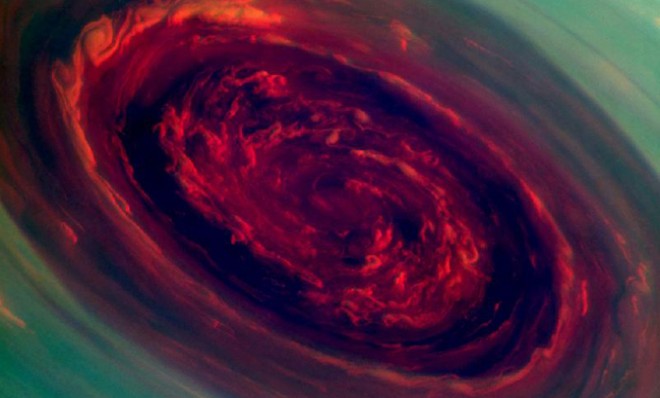

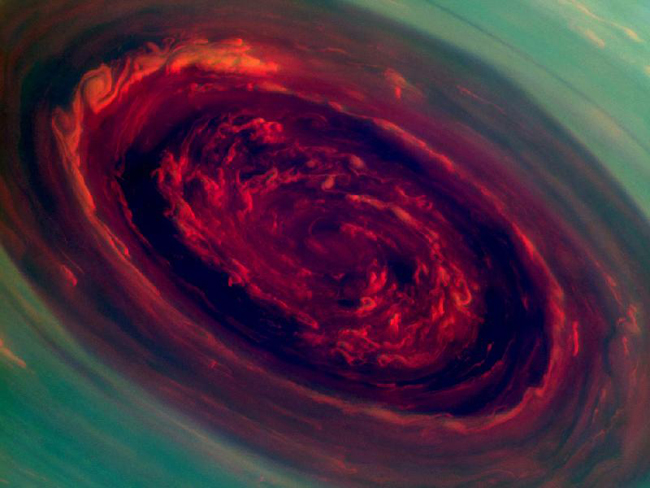
1. The rose over Saturn: This week, NASA released a stunning shot of an intimidating storm circulating over Saturn's north pole. The image was taken on November 27, 2012, by NASA's Cassini spacecraft from a distance of approximately 261,000 miles. The picture has been color-enhanced to illustrate the size and depth. The eye of the storm is reportedly a staggering 1,250 miles across, with cloud speeds as fast as 330 miles per hour. (NASA/JPL-Caltech/SSI)
**
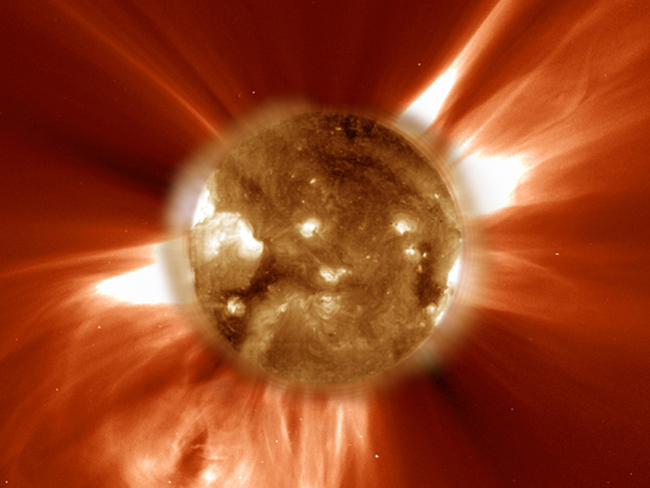
2. Sun storm: This dramatic image of an explosive sun storm — called a coronal mass ejection (CME) — is part of a detailed record of the phenomenon's development. CMEs occur about once a week, with a maximum rate of about two per day. Such solar flares can affect solar weather, and can occasionally mess with our GPS and electrical grids when directed at Earth. This image was captured by the spacecraft SOHO that orbits the sun. (NASA/JPL)
The Week
Escape your echo chamber. Get the facts behind the news, plus analysis from multiple perspectives.

Sign up for The Week's Free Newsletters
From our morning news briefing to a weekly Good News Newsletter, get the best of The Week delivered directly to your inbox.
From our morning news briefing to a weekly Good News Newsletter, get the best of The Week delivered directly to your inbox.
**
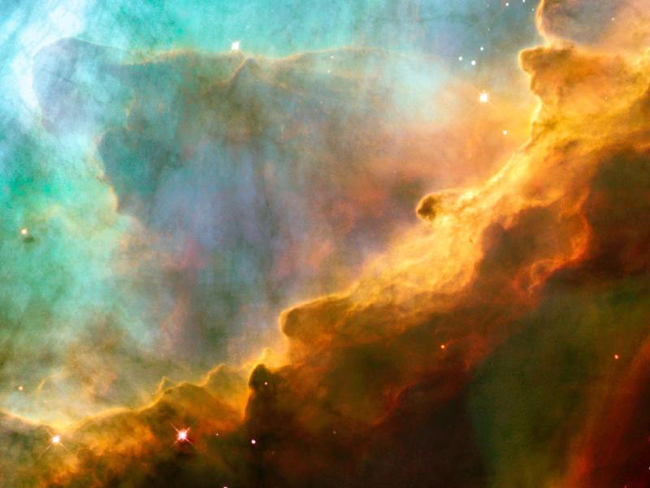
3. Gas storm: Here, turbulent celestial gases collide in the constellation Sagittarius. In the foreground is a massive cloud of hydrogen that is mixing with oxygen, sulfur, and other elements. The glow in the upper left is actually a torrent of ultraviolet radiation from young stars. The intense heat from the radiation sculpts the cold mass of hydrogen and gives it that orange-red glow. At high temperatures, layers of the hydrogen mass will separate from the surface into those green veil-like streams. The image was take by NASA's Hubble Space Telescope in the Omega or Swan Nebula, also known as M17, about 5,500 light years away. (NASA, ESA and J. Hester (ASU))
**
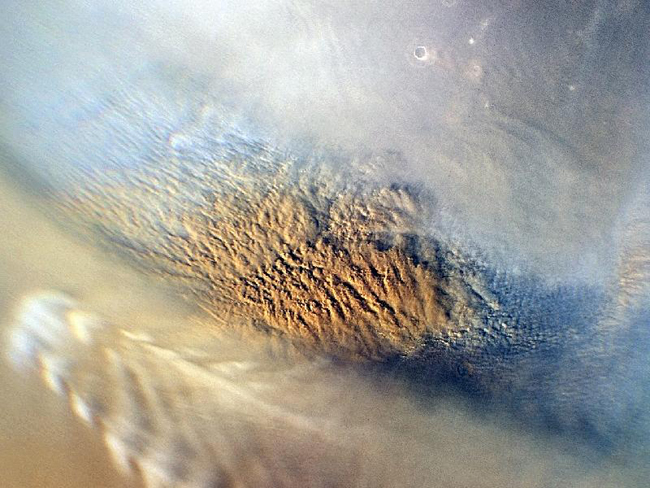
4. Martian dust storm: A dust storm moves across Mars' Utopia Planitia, along the north seasonal polar cap edge, during the planet's late northern winter. At the top of the picture is the north polar cap. The blurry formation just south of the storm are gravity-wave clouds, which result from changes in atmospheric pressure and temperature. (NASA/JPL-Caltech/MSSS)
A free daily email with the biggest news stories of the day – and the best features from TheWeek.com
**
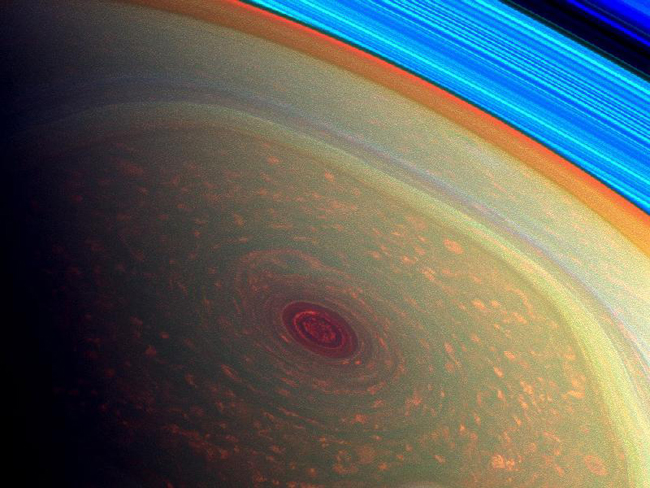
5. The eye over Saturn: The red vortex at the center of the swirling mass is the eye of a hurricane-like storm over Saturn's north pole. The image has been color-enhanced to show its different aspects. The yellowish green substance coiling outward from the dark red eye is the fast-moving hexagonal jet stream. The muted orange splotches within the stream are low-lying clouds. And the vivid blue at the far edge of the storm are the rings of Saturn. The image was taken by NASA's Cassini orbiter at a distance of about 261,000 miles. (NASA/JPL-Caltech/SSI)
**
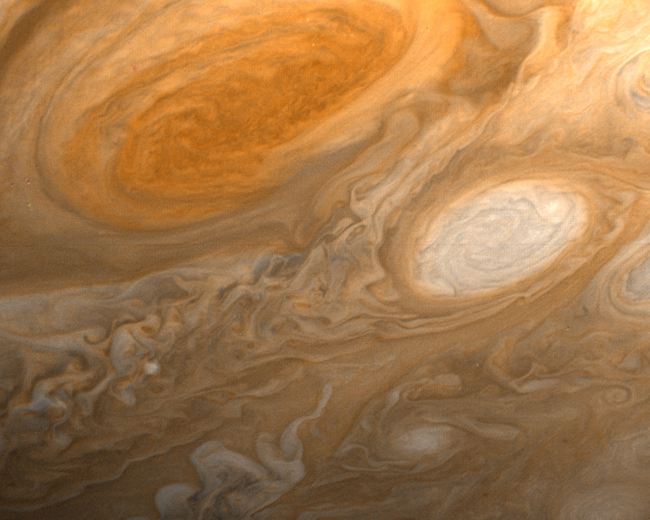
6. Jupiter's perpetual storm: Perhaps you've noticed the Great Red Spot on Jupiter's sand-colored surface? The angry eye is actually an atmospheric storm that has been raging on the plant's southern hemisphere for at least 400 years. The spot is large enough to engulf three Earths, but is significantly smaller — about half of the size — than it was just 100 years ago. The storm generally stays in the same place, thanks to two competing jet streams that prevent it from moving north or south. This close-up photo, taken by Voyager 1 in 1979, was the first image that allowed scientists to take a closer look at the planetary wonder they had been eyeing from Earth for hundreds of years. (NASA)
**

7. Celestial death storm: The death of a star can be a beautiful thing. As a star dies, its hot core radiates ultraviolet light, giving a glow to the dusty outer layers that disintegrate in space. The comets, and possibly planets, that would have been orbiting the star are suddenly tossed into each other, kicking up cosmic dust storms. This particular celestial death storm, called Helix nebula, occurred in the constellation of Aquarius, about 650 light years away. This is a combined image from NASA's Spitzer Space Telescope and the Galaxy Evolution Explorer. (NASA/JPL-Caltech)
Lauren Hansen produces The Week’s podcasts and videos and edits the photo blog, Captured. She also manages the production of the magazine's iPad app. A graduate of Kenyon College and Northwestern University, she previously worked at the BBC and Frontline. She knows a thing or two about pretty pictures and cute puppies, both of which she tweets about @mylaurenhansen.
-
 Film reviews: ‘Bugonia,’ ‘The Mastermind,’ and ‘Nouvelle Vague’
Film reviews: ‘Bugonia,’ ‘The Mastermind,’ and ‘Nouvelle Vague’feature A kidnapped CEO might only appear to be human, an amateurish art heist goes sideways, and Jean-Luc Godard’s ‘Breathless’ gets a lively homage
-
 ‘Not all news is bad’
‘Not all news is bad’Instant Opinion Opinion, comment and editorials of the day
-
 Book reviews: ‘Against the Machine: On the Unmaking of Humanity’ and ‘Nobody’s Girl: A Memoir of Surviving Abuse and Fighting for Justice’
Book reviews: ‘Against the Machine: On the Unmaking of Humanity’ and ‘Nobody’s Girl: A Memoir of Surviving Abuse and Fighting for Justice’feature An examination of humanity in the face of “the Machine” and a posthumous memoir from one of Jeffrey Epstein’s victims, who recently died by suicide
